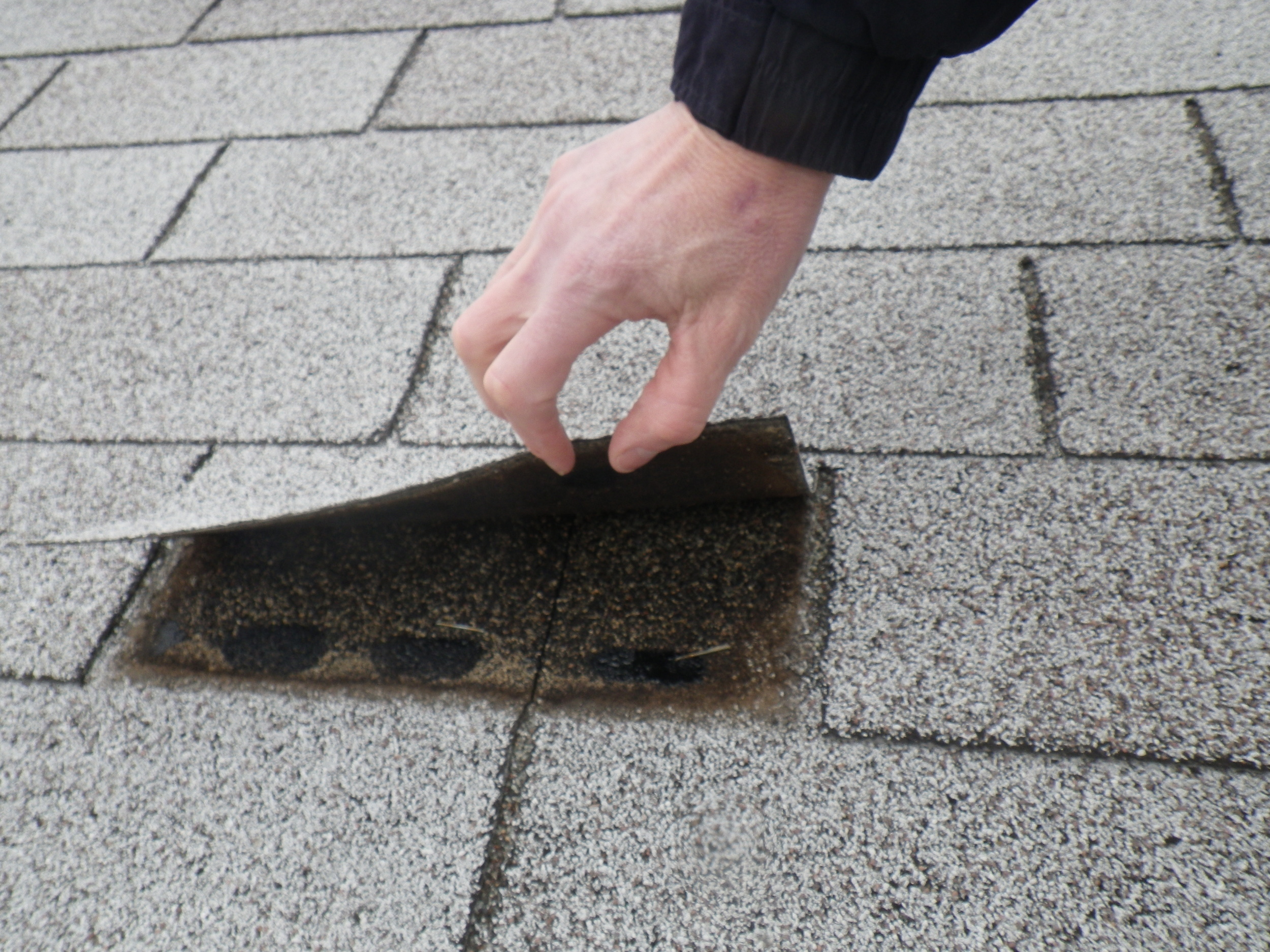Traverse the Roof
 One part of the Standards of Practice for Washington State that drew a ton of comments - much of it angry - was the requirement to traverse the roof during the inspection.
There are excellent reasons to actually get on the roof. The most important is that a large number of issues simply can't be observed from ground level. In the picture to the right, I've lifted a flap on the three-tab asphalt composition roof.
One part of the Standards of Practice for Washington State that drew a ton of comments - much of it angry - was the requirement to traverse the roof during the inspection.
There are excellent reasons to actually get on the roof. The most important is that a large number of issues simply can't be observed from ground level. In the picture to the right, I've lifted a flap on the three-tab asphalt composition roof.
First, I shouldn't be able to lift that tab with fingertips. That I can indicates that the tar strip - the black rubbery stuff you see on the shingle under the flap - deteriorated and isn't performing its function sealing the shingles together. Not unusual on an older roof and typically will generate a warning from me that the roof is aging and plans for future replacement should be considered.
The second item that was noticeable was the use of staples to attach the shingles to the roof. This was permissible for many years but went out of code somewhere around 1998-2000. I was still a foundation guy at that point so I don't know precisely when the change took place. Staples fail more easily than nails do which explains why we changed.
They are also harder to correctly install. If you look to the staple on the right (under my hand), you'll note that the installer put it in on an angle. That's a no-no.
None of this would have been visible from the ground.
Opponents of the requirement to traverse the roof had a good point - it can be very dangerous which is why my clients are not permitted to join me up there. The Home Inspector Licensing Board considered this and reached a sensible compromise. If the inspector feels that the roof is unsafe to traverse, he or she is not required to.
They didn't set specific conditions regarding the pitch of the roof or the weather or the health of the inspector (not joking - if Inspector Bob took an anti-histamine before going to work, he has no business up there.) They left it up to our discretion.
The one problem that presents is when a client becomes adamant that you traverse the roof. I had one who was exactly that determined for me to get on the roof. Pointing out that the wind gusts exceeded 70 mph and that to get on the upper level required balancing my ladder on a slope roof at the veranda only made him more determined. I finally offered his money back when he accused me of failing to deliver the promised services. He was shocked and backed down but it reinforced in my mind the most important part of roof safety.
I'm the one who gets to decide it I can traverse the roof. Not the client and not the agent. And I'll make a good faith effort to do it. But there isn't a roof in the world worth failing off of.